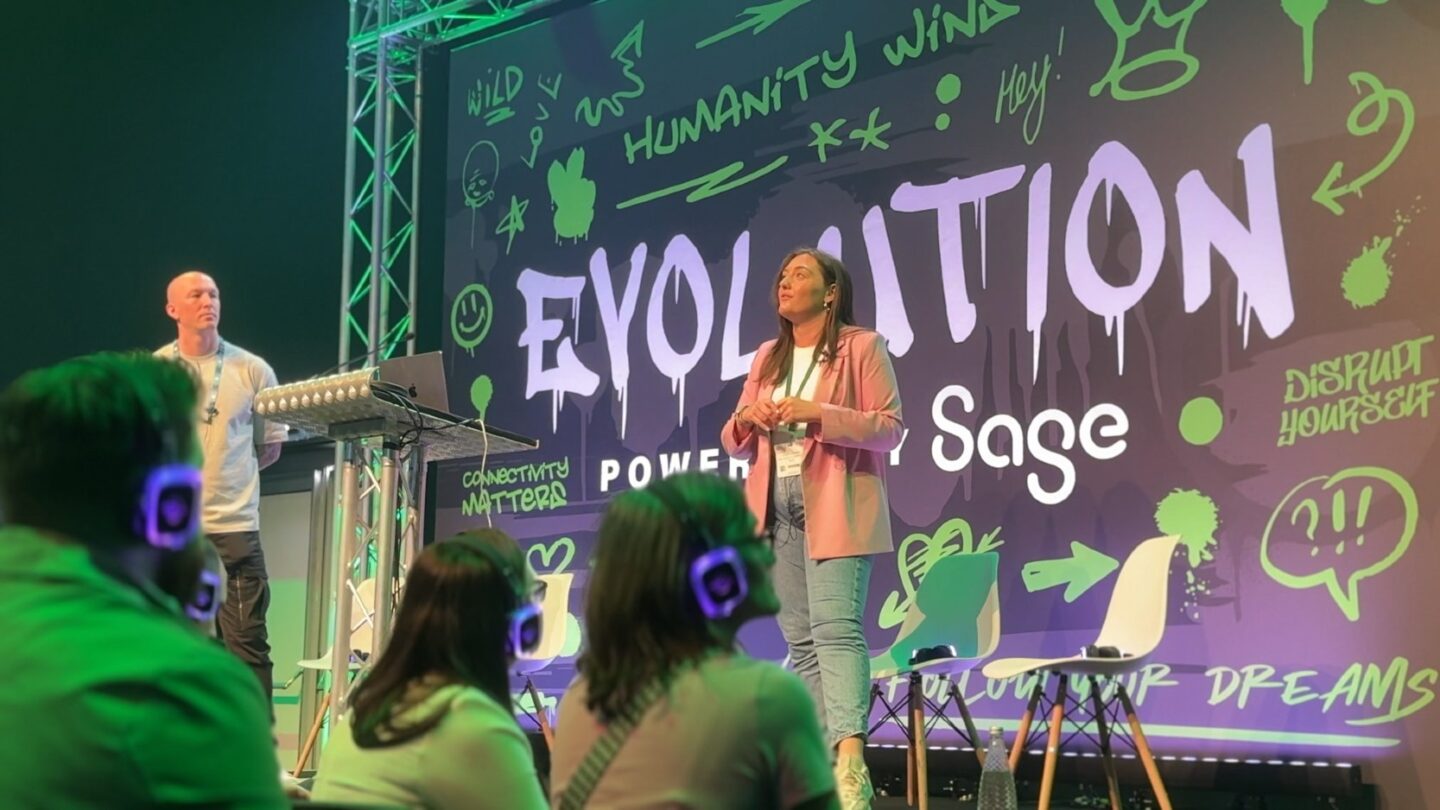Technology & Innovation
5 AI-powered tools to help accountants speed up processes and support clients
Discover a series of artificial intelligence solutions and tools that accountants can use to help them quickly complete client tasks.

Artificial intelligence (AI) is changing the face of human capability as we know it.
At first, AI tools were basic software models used for things like image recognition, object identification, detection, classification, and automated geophysical feature detection.
These are underlying tasks that once required the input of a human, but it would take them much more time, and error margins would be high.
Today, AI has been incorporated into software used by everyone who touches a phone or a computer, at a mind-boggling rate.
Its remit has expanded to tackle the minutiae of work:
- To make process improvements
- Save time
- Reduce manual administration tasks
- Cross-reference and error-check at lightning speed beyond human capabilities.
Across industries, AI can automate much of the routine and repetitive activities that are undertaken on a daily, weekly, or annual basis.
For you as an accountant, it can speed up the month-end, detect client data error, and greatly improve your day-to-day ability to help your clients.
But will AI replace accountants? The short answer is no.
AI needs a human partner to sense-check, educate, and contextualise its actions.
It’s a tool like any other, which can help you with quick decision-making, create smart insights and reports, and examine huge quantities of data with ease.
Also, AI cannot replace the human-to-human relationship element, which will always be a unique feature of a client-accountant partnership.
With this in mind, in this article we highlight five AI-powered tools and solutions that will help you improve your level of service, gain back valuable time, and turn your human touch into a USP for your business.
Here’s what we cover:
- 1. Predictive and forecasting solutions
- 2. Smart assistants
- 3. Automatic tagging and allocation of transactions
- 4. Anomaly detection
- 5. OCR solutions
- So, what’s next for AI and accountants?
- Final thoughts
Sage Ai
Discover how you can use Sage Ai to make smarter, faster decisions, get a dynamic, real-time view of your business performance, and gain access to actionable insights.

1. Predictive and forecasting solutions
Helping your clients forecast the finances of their businesses is one of the most valuable services you can offer.
With AI integrated into your client financial management software, you can provide comprehensive and accurate insights for your clients without the usual manual heavy lifting, paper-trail treasure hunt, and number-crunching behind report creation.
The time you save on manual admin can be spent contextualising the data and advising your clients.
Being able to quickly and easily access accurate, up-to-date reports and forecasts can also help you form a closer and more useful relationship with your clients.
This revolution will be empowered by one of the cornerstones of AI today: machine learning (ML).
Machine learning is everywhere. It allows mobile phones to:
- Enhance predictive text
- Use speech recognition
- Create route suggestions when navigating
- Suggest places you might want to visit when you reach your destination.
The software learns from what you do with data and can make its own suggestions, if not act entirely autonomously.
But what machine learning still needs—and what simultaneously makes it so useful—is access to data. Lots of data.
This is why ML is coming into its prime, because technology such as cloud computing means all the data can be collated and is accessible, rather than being siloed behind discrete systems that aren’t accessible outside of their location.
2. Smart assistants
Are you an accountant who considers turning off your phone so you can get work done during crunch time when seemingly every client is sending through their accounts?
You’re probably not alone.
Fortunately, smart assistants might be able to give you a helping hand.
They can form the first line of customer contact and might even be able to provide clients with the information they need, such as details about their current tax liability.
You might already know about smart assistants because you interact with Apple’s Siri or Google Assistant on your phone, or Amazon’s Alexa in your home.
In fact, smart assistants come in two forms:
- Scripted bots
- Natural language bots
Scripted bots have been around for a long time. They’re easier to build and mostly used for mobile engagement strategies, so you might encounter them on a website.
They look out for key phrases and aim to provide a ready-made response.
Sometimes these are called chatbots and have pre-programmed responses to common questions.
Natural language bots are referred to as smart assistants and this hints at how they’re more sophisticated.
They often involve speech recognition and accurate human voice synthesis, so they can respond to natural language queries. More than this, however, smart assistants learn the more you use them.
Both smart assistants (natural language bots) and scripted bots have their uses, depending on the business need.
Your accounting software can make use of both types of bots to enhance the client search and customer experience, and you’ve probably already used them whenever you search for something in the software, website, used a customer service chat box.
So, instead of being on constant phone calls to help your clients with basic, often repeatable things, using this first line of communication can help save hours of time that can be reallocated to more important tasks.
Sage Copilot
Learn about our new generative AI-powered assistant that tackles your to-do list, automates tasks, and recommends ways to help you make savings and drive improvements.

3. Automatic tagging and allocation of transactions
AI can help your accountancy practice through previously manual process improvements enabled by machine learning (ML). For example, you can teach AI to learn patterns and even predict them.
For you and your practice, this could revolutionise how transactions are sorted.
Instead of spending hours sifting through every entry, AI can be used to make classifications faster, with a little bit of guidance.
Put simply, your accounting software will learn from previous tagging decisions that are typically made according to rules that you’re aware of.
This will save you time by correctly tagging transactions and assigning them to the right ledger account.
Some of these rules are intuitive but others can be surprisingly complex, at least from a computer’s point of view.
The ability of technology to discover these rules and predictively plan can remove a significant component of your daily workload.
Software companies are already introducing AI to improve transaction processing, and uptake will increase over the coming years.
4. Anomaly detection
Computers love data, of course, and when ML is applied to massive amounts of data—such as the yearly ledgers of a large company—then there are clear benefits.
You’ll be able to discover anomalies that may exist—and the process will be much quicker and take significantly less effort.
If an audit is required, for example, it will be possible to audit all the data rather than merely a sample, yet without the huge resources typically required for what’s traditionally considered a full audit.
There are also implications to help detect fraud, as AI learns processes, vendor habits, and could be taught to follow compliance rules.
This means if any unusual payments occur outside the expected, these can be flagged and checked by a human, increasing accuracy, and helping to manage risk.
5. OCR solutions
Optical character recognition (OCR) isn’t new, but AI enhances its accuracy significantly and opens it to new usage scenarios.
While it’s always been possible to extract information automatically from documents, this required a human to point out where the data was located, usually by highlighting or selecting a section of an image.
And that’s something that also meant the document layout couldn’t be altered without further instruction.
Computers have always known what numbers are, of course, however they didn’t have the ability to create context, as that was added by human programming.
For example, a printed receipt for a purchase is full of numbers but they’re certainly not all equal. Some are of particular importance to you as an accountant:
- The date
- The total amount
- Perhaps the credit card number used to make the purchase.
A human can instantly identify all of these without even thinking but until now, all those numbers were indistinguishable for a computer.
The digits 1-5-1-2 might be the last four digits of the card number, or it might be a date, or it might be the amount of one of the items on the receipt.
With the application of AI to OCR, that all changes.
The OCR software is able to recognise document types such as receipts, invoices, or other printed financial documents, and where the numbers for each category of number would normally go.
This means the salient data can be extracted without the need for human input—even if the software hasn’t seen a receipt like that before, or if the scanned document isn’t particularly high quality.
For example, some accounting software lets you take a photo of a bill on your mobile phone, and AI will automatically recognise the data points, and log them in the correct place.
This reduces the human effort and time needed to allocate and assign information. It also reduces the need to store large amounts of paper for long periods of time.
This data, including images, can then be stored in the cloud and be made accessible anywhere with an internet connection.
So, what’s next for AI and accountants?
This is only the beginning of the integration of AI with traditional software and services.
While in the past you might have expected to buy an add-on software package to gain revolutionary new functionality, these tools are easily integrated into the software you use today.
Some of it, such as bank account reconciliation, might already be present in your practice’s accounting and client management software—and you might not even be aware.
All you might have noticed is that things just got easier when the software appeared to get that little bit smarter.
The revolution is taking place in many small increments, rather than an overnight change.
However, there’s always a ‘but’ in stories such as this and here it boils down to this: artificial intelligence is part of a wider revolution in technology that’s enabled by the cloud.
In order to take advantage of these technologies, you have to become an ambassador for cloud computing as the only way to collate and make massive amounts of data freely available that the ML needs to train AI models.
If the data it requires is spread over 100 spreadsheets or, even worse, printed documents, then it simply isn’t possible for the AI to access the files.
So advocating for cloud-based software, and the changes that entails to the client, must become part of how you advise your clients.
There may be a process of onboarding your clients, and helping them shift from paper-based storage, or adoption of new technology, to being comfortable using cloud-based software and digital record-keeping.
But don’t worry, it doesn’t mean you need to be an expert on cloud computing and AI.
It simply means being aware of what’s good practice as far as technology goes and ensuring solutions such as cloud computing are adopted within your practice.
This gives you all the benefits available today while ensuring you’re prepared for the future.
Final thoughts
AI is the next big leap in technology for finance professionals. It’s here, and improvements to existing software and new features are being added every day.
Accountants are understanding the benefits AI-powered software can give them.
With the likes of speedier processing of clients’ accounts, access to deeper insights and reporting, and time saved to deliver more strategic advice to clients, the returns on this investment in technology are already being felt.
Ensuring you’re one of the frontrunners to embrace AI will solidify your reputation with your clients as future-facing and pave the way for being able to offer an exceptional service in a fraction of the time you used to.
Editor’s note: This article was first published in January 2019 and has been updated for relevance.








Ask the author a question or share your advice